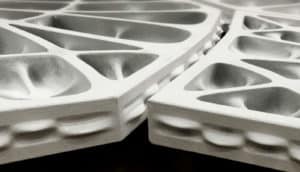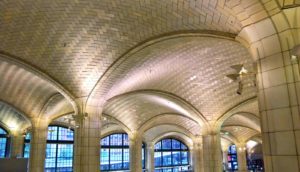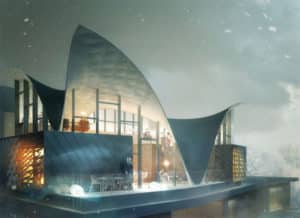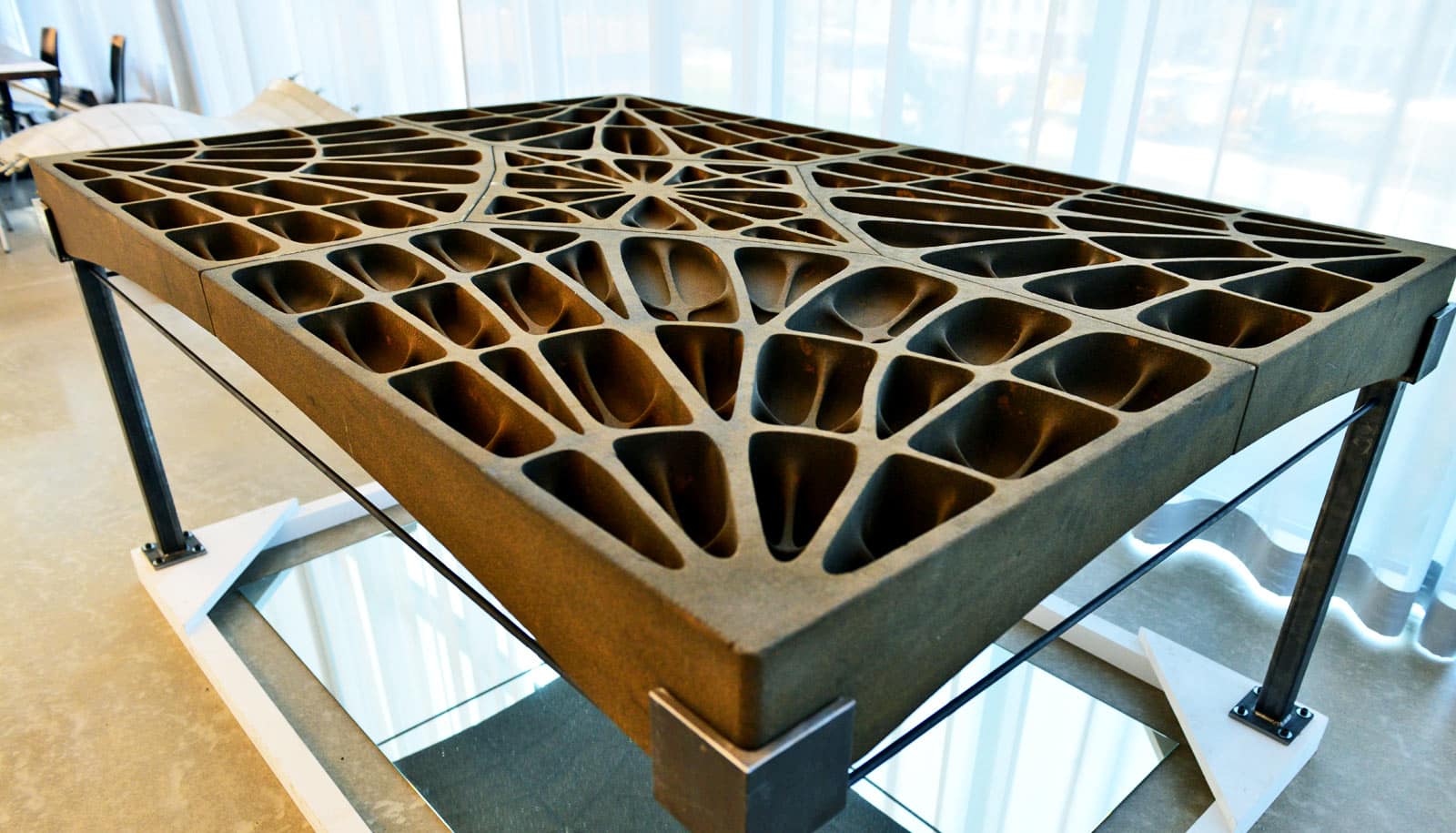Historical construction principles have inspired a new concrete floor system that doesn’t require steel reinforcement. It’s only two centimeters thick and is 70 percent lighter than conventional concrete floors.
Architects look for ways to make buildings more compact in order to save money and reduce environmental impact. Lightweight construction is one approach: thinner ceilings leave more space for extra floors.
However, there is almost no scope for weight reduction with the concrete construction techniques typically in use today: to ensure that the floors of each story can support the necessary load, they must be an average of 25 centimeters thick and reinforced internally with steel bars or grids. This amount of material makes them very heavy.

Researchers at ETH Zurich’s Institute of Technology in Architecture have developed concrete floor elements in which the load-bearing slab is just two centimeters thick and yet extremely stable.
“This makes them 70 percent lighter than conventional concrete floors,” says Philippe Block, associate professor of architecture and structure and deputy director of the National Centre of Competence in Research in Digital Fabrication.
At the same time, these elements help to protect the environment as they require less concrete, whose production gives rise to large quantities of CO2.

Arching slabs
The weight reduction is possible because, instead of being flat, the slabs arch like the vaulted ceilings of Gothic cathedrals. Simply by virtue of their shape, they can support very heavy loads and so do not need to be strengthened with reinforcing steel.
“We based our design on historical construction principles and techniques that have since been forgotten,” says Block.
To this end, the researchers analyzed structures in various styles, including the Catalan vault. The Spanish architect Rafael Guastavino brought this traditional construction method to the US in the late 19th century. Guastavino reinforced his brick vaults with narrow vertical ribs on the upper side. These ribs create a flat surface for the floor, and also provide the vault’s stability under asymmetric loading—that is, when the weight of people or objects is not distributed evenly throughout the room.
Defects explain why Roman concrete was so tough
The researchers adopted this principle of strengthening ribs for their concrete elements. Using specially developed computer software, they calculated how the ribs would need to be arranged to produce the optimum distribution of compression forces under loading, resulting in an intricate pattern of thin lines that converge at each of the corners.
The supports connect via a set of steel ties that absorb the resulting horizontal forces—performing the same role as the flying buttresses that support the vaults in cathedrals. “The construction is extremely stable,” says Block. Stress tests have shown that it can withstand an asymmetric load of 4.2 tonnes, which is more than two and a half times what the applicable building codes in Switzerland stipulate.

A penthouse on the roof
The researchers will now test their innovative flooring slabs in practice for the first time at the NEST research building in Dübendorf near Zurich, Switzerland. Beginning this year, a two-story guest penthouse will go up on the building’s roof.
It will feature four floor units, each five by five meters in size, which will be prefabricated as modules and then installed on-site. The modules offer another advantage: the hollow spaces between the concrete ribs can be used to install ventilation, cooling, and heating pipes, which also helps to save space.
Nanocrystals can toughen up concrete
Until now, however, the elements were expensive to produce because they had to be cast in double-sided molds that needed to match each other precisely. Block and his team therefore went one step further: to bring the production costs down, they produced the first elements using 3D printing—but instead of concrete, they used sand combined with a binder.
These elements can withstand a load of 1.4 tonnes and so also comply with Swiss building standards. “Our structural principles make it possible to use materials that were previously unsuitable for building,” says Block. “You just have to put them in the right form so that they create a stable structure.”
A paper on the work appears in Engineering Structures.
Source: Claudia Hoffman for ETH Zurich



